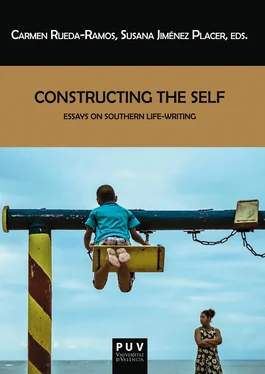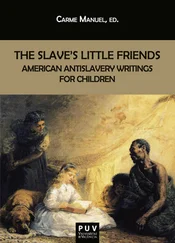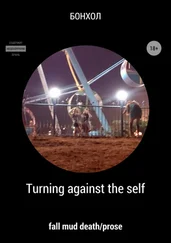AAVV - Constructing the Self
Здесь есть возможность читать онлайн «AAVV - Constructing the Self» — ознакомительный отрывок электронной книги совершенно бесплатно, а после прочтения отрывка купить полную версию. В некоторых случаях можно слушать аудио, скачать через торрент в формате fb2 и присутствует краткое содержание. Жанр: unrecognised, на английском языке. Описание произведения, (предисловие) а так же отзывы посетителей доступны на портале библиотеки ЛибКат.
- Название:Constructing the Self
- Автор:
- Жанр:
- Год:неизвестен
- ISBN:нет данных
- Рейтинг книги:3 / 5. Голосов: 1
-
Избранное:Добавить в избранное
- Отзывы:
-
Ваша оценка:
- 60
- 1
- 2
- 3
- 4
- 5
Constructing the Self: краткое содержание, описание и аннотация
Предлагаем к чтению аннотацию, описание, краткое содержание или предисловие (зависит от того, что написал сам автор книги «Constructing the Self»). Если вы не нашли необходимую информацию о книге — напишите в комментариях, мы постараемся отыскать её.
Constructing the Self — читать онлайн ознакомительный отрывок
Ниже представлен текст книги, разбитый по страницам. Система сохранения места последней прочитанной страницы, позволяет с удобством читать онлайн бесплатно книгу «Constructing the Self», без необходимости каждый раз заново искать на чём Вы остановились. Поставьте закладку, и сможете в любой момент перейти на страницу, на которой закончили чтение.
Интервал:
Закладка:
The same is true with his presentation of his family in Jackson, Mississippi. He depicts his sanctimonious grandmother as a severe hinderer to his intellectual development, curiosity, and emotional well-being. His mother, although a teacher, has little to offer in the way of intellectual guidance or life lessons. Again, Wright portrays his family members, as with other black folks he encounters, as having compromised the essence of their beings. They have made peace with racism, made peace with discrimination, settled into their roles as second class citizens outside the mainstream of American democracy, and self-segregated themselves into the geographical niches that whites have suggested is their natural lot in life. Throughout his narrative, therefore, Richard Wright presents himself as the individual, highly intelligent young man who has challenged—sometimes directly but more often indirectly—the system of inequality and injustice under which he and fellow blacks are forced to live. Those other blacks, though, do not have the intelligence, the critical and analytical skills to see their circumstances for what they truly are. On the soil of the South, therefore, Richard Wright presents himself as an exception, as perhaps the exception, to acquiescence to racial injustice. Wright is the conqueror who will go forth to save himself and write about other blacks, while they are content, ignorantly so, to remain in the places southern racism has assigned to them.
There is an irony in Wright’s impulse to creativity, however. Even as he presents himself as the exception, he is showing the circumstances under which other blacks live. Astute readers, be they black or white, will be inclined to sympathize with and perhaps desire change for those black folks from whom Wright wants to escape so desperately. To Wright, early twentieth century conditions of black existence in the South are not changed appreciably from days of slavery, so he follows the North Star into Memphis and Chicago in the hope of better things. He becomes a part of the Great Migration of African Americans out of the South and one of the first to write about it. While many of those who moved north during the Great Migration succeeded in helping their families—and even Wright himself did that—the initial impulse was for individualistic gain. Go North, get a good job, make some money, and then help others if you can.
While it might be argued that the segregated, Jim Crow, racist South could in many ways be viewed as a new form of slavery, as Douglas Blackmon argues in Slavery By Another Name (2008), it still did not inspire in Wright the desire for immediacy of transformation that Douglass and Jacobs expressed in their narratives. Drinking from water fountains marked black, or using toilets similarly marked, apparently did not resonate the way that receiving 39 lashes for not meeting a quota for picking cotton during slavery may have resonated.
The same arguments of individualism as the guiding force in the impulse to writing a life narrative might be applied to Zora Neale Hurston. Born in Alabama and bred in Florida, Washington, D.C. and New York, Hurston had published five books by 1940, which made her an exception not only among African American women writers, but among African American writers in general. Her success led her publisher, Bertram Lippincott, to insist that Hurston pen her life story. After extensive delays, during which she asserted that writing about one’s life was almost too daunting a task to undertake, Hurston did indeed complete her life narrative and published it as Dust Tracks on a Road in 1942. In the process, Hurston created a narrative that is so individualistic that scholars have difficulty in deciphering some of the visions that she claims shaped her life. Rather than focus exclusively on race or agitating for transformed southern race relations, Hurston spends quite a bit of time illustrating that she is, like Wright, an exception among so-called Negroes. That exceptionalism begins with her recounting of her birth, and it continues throughout her narrative.
While Richard Wright presents almost every encounter between blacks and whites on southern soil as potentially life threatening and definitely dangerous, Hurston elides any such hostility in her text. Encounters between blacks and whites are harmonious and, at times, downright helpful, beginning with Hurston’s own delivery. Most black folks of Hurston’s generation in the South were delivered by midwives, but Hurston paints her delivery as specially ordained when the midwife is out of place and her mother’s birth pains begin. No matter. A local white man just happens to arrive at the house to share some freshly killed hog meat, and he comes to the rescue. Hurston writes of this Good Samaritan who comes upon her shortly after she “rushes out” of her mother’s womb:
He followed the noise and then he saw how things were, and, being the kind of a man he was, he took out his Barlow Knife and cut the navel cord, then he did the best he could about other things. When the mid-wife, locally known as a granny, arrived about an hour later, there was a fire in the stove and plenty of hot water on. I had been sponged off in some sort of a way, and Mama was holding me in her arms. ( Dust Tracks 21)
Note that Hurston privileges this white man’s intervention over her own mother’s birth pains. In fact, her mother almost disappears from the narrative, in spite of the fact that she is the one who gave birth. The person truly responsible for her survival at this point, Hurston implies, is the white godfather. From this auspicious beginning, therefore, Hurston makes it clear that she is not just some common colored person born in the country in Florida. Instead, her beginnings are legendary, almost mythical, which means that she is unlike the run of the mill average black person. She also makes it clear by presenting this man as being in her life for a number of years, even using the word “nigger” with her, that she is not going to spend her narrative castigating southern whites.
The exceptionalism that characterizes Hurston’s birth continues throughout her narrative. Two white women from the North select her as the student upon whom to bestow special favors, including giving her a cylinder of 100 shiny new pennies after she reads for them and sending her clothes from the North for an extended period after that. She recounts her visit to the women in their hotel room in Eatonville:
They had shiny hair, mostly brownish. One had a looping gold chain around her neck. The other one was dressed all over in black and white with a pretty finger ring on her left hand. But the thing that held my eyes were their fingers. They were long and thin, and very white, except up near the tips. There they were baby pink. I had never seen such hands. It was a fascinating discovery for me. ( Dust Tracks 35)
From her legendary arrival into the world to her being favored by these visiting white women to her belief that the moon follows only her, Hurston makes it clear that there are black people—and then there is ZORA NEALE HURSTON. Again, individualism trumps community in the creation of the narrative, and there is no higher agenda that seems to underpin the story. Indeed, Hurston even refuses to write about what made her the success she became that warranted an autobiography. Of the more than 300 pages in the narrative, Hurston spends only six pages on her literary career. For this autobiographical venture, Hurston essentially said, “I will give you a semblance of form, but I won’t give you substance. I will give you a substantially incomplete life, and perhaps you will simply conclude that I was tired, at points, especially here at the end, or that I didn’t really know what I was doing.” I maintain that she was “putting something outside her mind”—as she asserts in Mules and Men (1935) that black people generally do when they feel challenged—for Lippincott and her white readers to play with and going on about her business. And that business did not include a nationalistic agenda. As far as Hurston was concerned, the community of black folks in which she grew up was second in value to the little colored girl named Zora who came out of that community.
Читать дальшеИнтервал:
Закладка:
Похожие книги на «Constructing the Self»
Представляем Вашему вниманию похожие книги на «Constructing the Self» списком для выбора. Мы отобрали схожую по названию и смыслу литературу в надежде предоставить читателям больше вариантов отыскать новые, интересные, ещё непрочитанные произведения.
Обсуждение, отзывы о книге «Constructing the Self» и просто собственные мнения читателей. Оставьте ваши комментарии, напишите, что Вы думаете о произведении, его смысле или главных героях. Укажите что конкретно понравилось, а что нет, и почему Вы так считаете.












